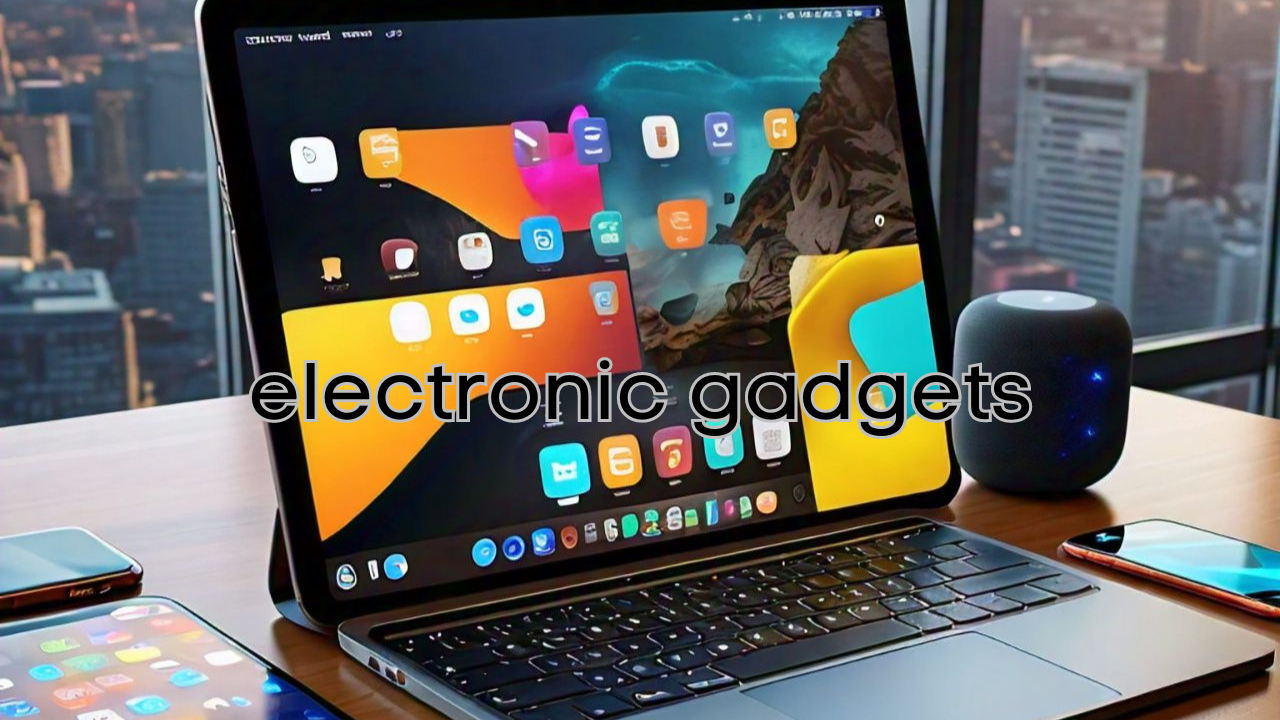Collaborative whiteboard software comprises online tools designed for real-time group or individual brainstorming and idea sharing on a digital whiteboard. These platforms facilitate remote collaboration, offering a shared space for participants to work together despite physical distances. Whether starting with a blank slate or utilizing premade templates, groups can use digital pens, markers, shapes, text boxes, and color palettes to visually express thoughts and ideas.
Real-time synchronization ensures changes made by one user instantly appear on the screens of others, enhancing efficiency and effectiveness in collaborative efforts. The software often includes features like importing photographs, documents, and multimedia files onto the whiteboard, alongside tools such as sticky notes, comments, and text highlighting for additional functionality.
Collaborative whiteboard software proves invaluable for virtual meetings, remote teamwork, online classes, creative thinking sessions, and project planning. It encourages participation, aids in visualizing abstract ideas, sparks creativity, and fosters teamwork. With the growing prevalence of remote work and virtual collaboration, the popularity of collaborative whiteboard software has surged. In virtual settings, these tools serve as dynamic platforms, promoting collaboration, ideation, and innovation among individuals and groups.
Purpose of Collaborative Whiteboard Software
Collaborative whiteboard software is a digital tool crafted to facilitate real-time collaboration, idea sharing, and brainstorming among individuals or teams in a virtual environment. Its purpose is to replicate the experience of working on a physical whiteboard, offering interactive features and tools for drawing, writing, annotating, and manipulating content on a shared digital canvas. The software enables simultaneous collaboration from multiple locations, making it invaluable for remote teams, online classrooms, and virtual meetings.
The primary objectives of collaborative whiteboard software encompass:
Remote Collaboration: It enables individuals dispersed geographically to collaborate in real-time, fostering idea contribution, brainstorming, and visual communication irrespective of physical distances.
Idea Generation and Visualization: Providing a platform for brainstorming and ideation, users can sketch ideas, create diagrams, draw flowcharts, and visually represent concepts interactively.
Information Sharing and Annotation: Users can import various content types like images, documents, or multimedia files onto the whiteboard for easy sharing and collaboration. Annotations and markups facilitate effective feedback, revisions, and detailed discussions.
Enhanced Communication: The software promotes effective communication through real-time interaction, instant feedback, and visibility into changes made by collaborators, cultivating a sense of presence and teamwork.
Seamless Workflow Integration: Many collaborative whiteboard software applications seamlessly integrate with other collaboration tools such as video conferencing, project management, or file-sharing systems. This integration ensures a smooth workflow, centralizing resources and facilitating easy access to relevant information during collaborative sessions.
Overall, collaborative whiteboard software acts as a digital hub for collaborative work, encouraging engagement, creativity, and productivity. It empowers individuals and teams to collaborate, share ideas, and visualize concepts dynamically and interactively, transcending physical distances.
Advantages of Real-time Collaboration with Digital Whiteboards:
- Real-time Collaboration: Digital whiteboards enable simultaneous contribution and interaction among remote team members, fostering active engagement and efficient collaboration regardless of geographical distances.
- Seamless Remote Work: Providing a virtual space that transcends physical limitations, digital whiteboards allow remote teams to collaborate synchronously, replicating the experience of working together in the same room.
- Visual Communication: Visual elements on digital whiteboards, such as drawings and diagrams, enhance communication by providing a clear and visual representation of ideas. This facilitates better understanding and retention of complex concepts.
- Enhanced Creativity and Ideation: The dynamic and interactive nature of digital whiteboards encourages creative thinking and ideation. Team members can freely express and build upon ideas, fostering innovation and a collaborative atmosphere.
Flexibility and Persistence of Digital Whiteboards:
- Flexibility and Versatility: Digital whiteboards offer flexibility in content creation and manipulation, allowing users to add text, drawings, images, or multimedia elements. This adaptability accommodates various purposes and visual learning styles.
- Persistent and Accessible: Unlike physical whiteboards, digital counterparts provide a persistent workspace. Content created during sessions can be saved and accessed later, ensuring continuity in collaboration and preventing the loss of ideas or progress.
- Collaboration Beyond Meetings: Digital whiteboards support asynchronous collaboration, allowing team members to contribute and review content outside scheduled meetings. This flexibility enables engagement throughout the project’s duration.
- Documentation and Record-keeping: Digital whiteboards simplify documentation and record-keeping by capturing, saving, and sharing content created during collaboration sessions. This documentation serves as a valuable reference for future discussions, decision-making, or project documentation.
Features and Functionality
Real-time collaboration refers to the ability of individuals or teams to work together simultaneously on a shared task or project, with immediate updates and communication. It allows participants to collaborate in real time, regardless of their physical locations, enabling instant interaction, feedback, and decision-making.
Immediate Communication and Synchronized Updates in Real-time Collaboration:
- Immediate Communication: Real-time collaboration tools provide instant communication channels, including chat, video conferencing, or voice calls. Team members can communicate in real-time, fostering efficient and seamless interaction, regardless of geographical location.
- Synchronized Updates: With real-time collaboration, participants have access to the same information, witnessing updates or changes made by others instantly. This ensures that everyone works on the latest version of the project, minimizing errors and confusion.
- Enhanced Productivity: Real-time collaboration enables simultaneous work on tasks, projects, or documents, eliminating the need for prolonged exchanges. This fosters faster decision-making, problem-solving, and overall progress, contributing to enhanced productivity.
Coordination, Feedback, and Engagement in Real-time Collaboration:
- Improved Coordination: Real-time collaboration tools facilitate coordination by offering a central platform for sharing information, assigning tasks, and tracking progress. This helps teams stay organized, aligned, and focused on common objectives.
- Seamless Feedback and Iteration: Real-time collaboration allows for instant feedback and iteration cycles. Team members can provide feedback on work in progress, make suggestions, and refine ideas together, fostering a collaborative and iterative approach to problem-solving and creativity.
- Increased Engagement: Real-time collaboration promotes active participation and engagement. The immediate nature of collaboration encourages individuals to contribute, share ideas, and feel more involved in decision-making, leading to increased engagement and ownership.
- Flexibility and Adaptability: Real-time collaboration tools offer flexibility to adapt to different work styles and preferences. Participants can choose to collaborate synchronously or asynchronously, allowing for a more adaptable and inclusive collaboration environment based on availability and working preferences.
Drawing and Annotation Tools
Drawing and annotation tools are digital features that allow users to create drawings, sketches, and annotations within various software applications. These tools enable individuals to visually express ideas, highlight important points, and enhance communication and collaboration.
These drawing and annotation tools can be found in a variety of software applications, including collaborative whiteboard tools, graphic design software, document mark-up tools, and digital note-taking applications. They enhance creativity, visual communication, and collaboration by providing users with versatile options to express ideas, annotate content, and create engaging visual representations.
Integration of Multimedia Elements
The integration of multimedia elements refers to the capability of software applications to incorporate various forms of media, such as images, videos, audio files, and documents, into a single platform. This integration enhances the versatility and functionality of the software, allowing users to work with different types of media simultaneously.
The integration of multimedia elements into software applications expands the possibilities for creativity, communication, and expression. It allows users to work with different media types within a unified platform, streamlining workflows and enabling seamless interactions between various media elements.
Sticky Notes and Text Boxes for Adding Comments and Annotations
Sticky notes and text boxes are valuable tools for adding comments and annotations within software applications. They provide a means for users to insert text-based information, observations, or explanations alongside other content. Here are some key aspects of sticky notes and text boxes for adding comments and annotations:
- Note Placement
- Text Input
- Formatting Options
- Collaboration and Discussion
- Mobility and Flexibility
- Persistent and Non-Destructive
- Export and Sharing
The inclusion of sticky notes and text boxes for comments and annotations enriches the collaborative experience within software applications. They provide a flexible and non-intrusive method for users to add their thoughts, explanations, or feedback alongside the content, enhancing communication, clarity, and collaboration.
Screen Sharing and Video Conferencing Capabilities
Screen sharing and video conferencing capabilities are essential features that enable users to collaborate, communicate, and share visual information in real-time, regardless of their physical locations. Here are some key aspects of screen sharing and video conferencing capabilities:
- Screen Sharing
- Visual Communication
- Remote Collaboration
- Presentation and Demonstration
- Training and Support
- Interactive Features
- Recording and Playback
- Integration with Collaboration Tools
Screen sharing and video conferencing capabilities have become essential in remote work, online education, and virtual collaboration scenarios. They bridge the gap between geographically dispersed individuals, enabling effective communication, collaboration, and knowledge sharing. These capabilities promote engagement, enhance understanding, and facilitate efficient teamwork regardless of physical distance.
Benefits of Collaborative Whiteboard Software
Strategies for Enhancing Remote Teamwork and Collaboration:
- Clear Communication Channels: Establish reliable communication channels such as instant messaging platforms, video conferencing tools, and project management software to facilitate seamless communication and information sharing among remote team members.
- Regular Check-Ins: Schedule regular check-in meetings or video conferences to maintain alignment, address concerns, and provide project updates. These sessions promote transparency, encourage collaboration, and contribute to building rapport among geographically dispersed team members.
- Defined Goals and Roles: Clearly define project goals, objectives, and individual roles within the team. Ensure that everyone understands their responsibilities, promoting clarity, accountability, and effective collaboration.
- Utilize Collaborative Tools: Make use of collaborative software tools like project management platforms, shared document repositories, and virtual whiteboards. These tools empower team members to work together, share ideas, and track progress in real-time, overcoming geographical barriers.
- Foster a Team Culture: Create a positive team culture by emphasizing trust, inclusivity, and open communication. Encourage active participation, idea-sharing, and feedback. Recognition of individual and team achievements fosters camaraderie and motivation.
Practices for Effective Remote Teamwork:
- Set Clear Expectations: Define expectations for deliverables, deadlines, and communication response times. Establish guidelines for remote work etiquette, availability, and collaboration norms to ensure everyone is on the same page.
- Encourage Collaboration and Knowledge Sharing: Foster a collaborative environment where team members actively contribute, share knowledge, and seek input from others. Cross-functional collaboration and knowledge sharing can be facilitated through virtual workshops, webinars, or online forums.
- Virtual Team-Building Activities: Organize virtual team-building activities, such as online games, virtual coffee breaks, or team challenges, to strengthen relationships and boost morale among remote team members.
- Embrace Flexibility and Empathy: Recognize the need for flexibility in remote work due to different time zones, work schedules, and personal commitments. Show empathy towards team members’ unique situations and accommodate individual needs while maintaining a balance between work and personal life.
- Continuous Feedback and Improvement: Establish a culture of continuous feedback and improvement by regularly seeking input from team members on collaboration processes, tools, and communication methods. Use this feedback to refine and optimize remote teamwork practices for ongoing enhancement.
Project Planning and Management
Key Aspects of Project Planning and Management:
Project planning and management are critical processes that underpin the success of any project. Several key aspects must be carefully considered to ensure effective execution:
- Define Project Objectives: Clearly articulate the project’s goals, outcomes, and deliverables to provide a shared direction for all team members.
- Scope Definition: Determine the project’s scope by outlining what is included and excluded. Establishing clear boundaries ensures a comprehensive understanding of the project’s extent.
- Stakeholder Identification and Engagement: Identify internal and external stakeholders early on, engaging with them to understand expectations, requirements, and potential risks. Maintain regular communication throughout the project.
- Resource Allocation: Identify and allocate necessary resources, including human resources, equipment, technology, and finances, ensuring effective utilization to support project activities.
- Timeline and Milestone Setting: Develop a realistic project timeline with key milestones and deadlines. Break down the project into manageable phases, considering dependencies and critical paths.
Effective Project Management Considerations:
Continuing the focus on effective project management, consider the following aspects:
- Risk Management: Identify potential risks, assess their likelihood and impact, and establish strategies for mitigation or response. Regularly monitor and review risks throughout the project lifecycle.
- Communication and Collaboration: Establish effective communication channels and protocols among team members and stakeholders. Foster a collaborative environment that encourages open communication, knowledge sharing, and timely feedback.
- Project Documentation: Maintain comprehensive project documentation, including plans, requirements, meeting minutes, progress reports, and relevant records. This documentation ensures transparency and serves as a reference for future projects.
- Quality Assurance: Define quality standards and develop a plan for quality assurance. Regularly assess deliverables against established standards to ensure the desired level of quality.
- Monitoring and Control: Continuously monitor project progress, resource utilization, and risks using project management tools. Identify deviations and take corrective actions as needed, regularly reviewing project status and performance against established metrics.
- Adaptability and Flexibility: Be prepared to adapt and adjust plans as projects encounter unexpected changes. Incorporate change management processes to effectively handle modifications to scope, timelines, or resources.
- Continuous Improvement: Regularly review project performance, outcomes, and lessons learned. Identify areas for improvement and implement changes to enhance future project planning and management processes.
Effective project planning and management contribute to the successful completion of projects within the defined scope, budget, and timeline. By paying attention to these key aspects, establishing clear communication channels, and employing appropriate project management methodologies, teams can achieve their project objectives and deliver high-quality outcomes.
Popular Collaborative Whiteboard Software
There are several popular collaborative whiteboard software applications available that facilitate real-time collaboration, idea sharing, and remote teamwork. Here are some notable examples:
Miro
Miro is a widely used collaborative whiteboard platform that offers a range of tools for visual collaboration. It allows users to create and collaborate on virtual whiteboards, share ideas, add sticky notes, draw, and integrate various multimedia elements. Miro is popular for brainstorming sessions, project management, and agile workflows.
Microsoft Whiteboard
With Microsoft Whiteboard, teams can collaborate in real-time while using a digital whiteboard. It includes tools including a canvas, text boxes, and shapes to facilitate sketching, writing, and note-taking. Collaboration across devices is made easy with Microsoft Whiteboard’s synergistic integration with other Microsoft apps.
Google Jamboard
Google Jamboard is a collaborative digital whiteboard designed for G Suite users. It offers a touch-enabled interface that allows users to sketch, write, and add digital sticky notes. Jamboard supports real-time collaboration, supports the integration of images and files, and can be accessed from multiple devices.
Mural
The mural is a visual collaboration platform that combines digital whiteboarding with other collaborative features. It provides a virtual canvas for teams to work together, brainstorm ideas, and organize content. Mural offers a range of templates, sticky notes, and drawing tools to facilitate collaboration and creative thinking.
Conceptboard
Conceptboard is an online collaborative whiteboard that enables teams to work together on visual projects. It offers a variety of tools, such as drawing tools, sticky notes, and comment features, to facilitate communication and collaboration. Conceptboard also supports real-time collaboration and integrates with other project management tools.
Stormboard
Stormboard is a digital brainstorming and collaboration platform that combines sticky note-style collaboration with whiteboarding capabilities. It allows teams to capture and organize ideas, add comments, vote on priorities, and collaborate in real time. Stormboard supports remote collaboration and offers integrations with other popular tools.
Conclusion
In conclusion, the necessity for collaborative whiteboard software is paramount for remote teams and individuals seeking to enhance cooperation, brainstorming, and idea-sharing. These software solutions leverage real-time collaboration, drawing and annotation tools, multimedia integration, as well as features like sticky notes and text boxes. The advantages of remote collaboration with digital whiteboards are manifold. They foster real-time cooperation and dynamic idea-sharing, while drawing and annotation tools empower users to visually articulate their thoughts. The seamless integration of multimedia elements such as photos, videos, and documents further enhances collaborative efforts.
Widely utilized in education, e-learning, design, and project management, collaborative whiteboard software’s versatility and compatibility with various devices and operating systems make it accessible to a broad audience. When selecting collaborative whiteboard software, considerations should include compatibility with devices and operating systems, integration with productivity tools, user-friendliness, and ease of use. Features, cost, and user reviews also play vital roles in the decision-making process. Ultimately, collaborative whiteboard software has significantly enhanced remote teamwork by facilitating idea-sharing, communication, and overall productivity, enabling teams to collaborate seamlessly across borders and fostering creativity and innovation.
Neha Pant







